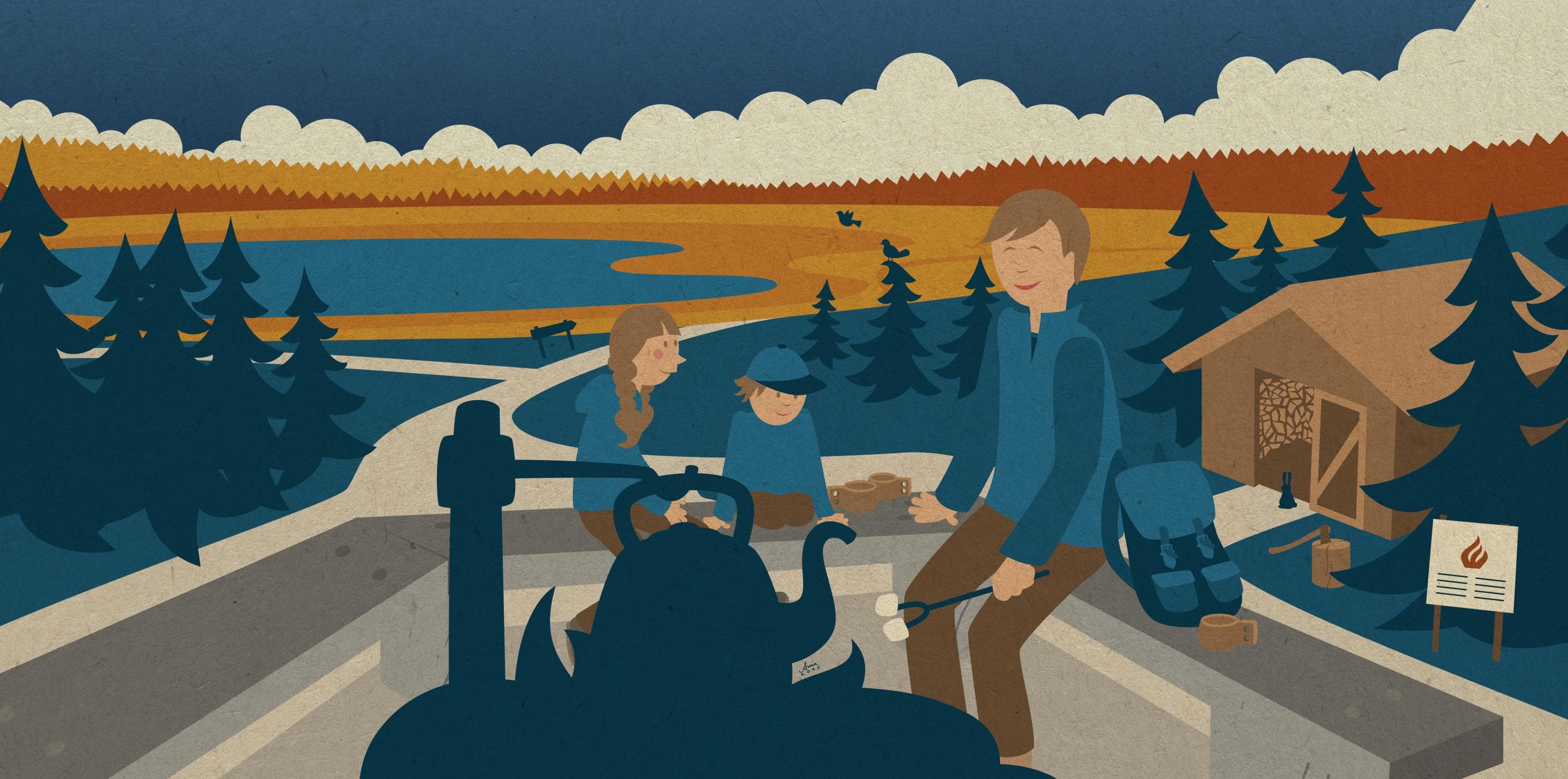1. Respect nature – leave no trace in it
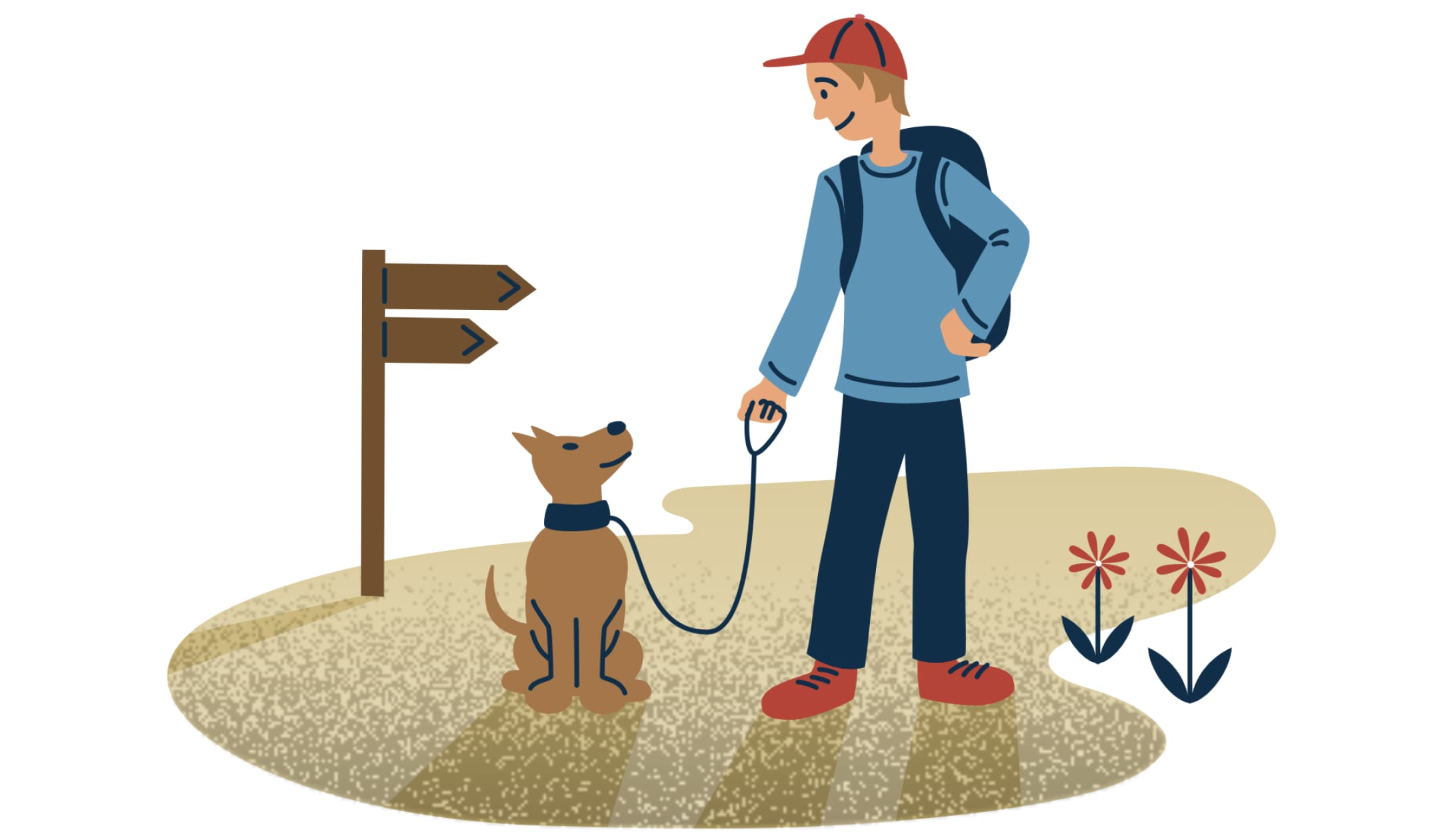
Keep pets on a leash
Dogs running free can cause damage to young birds and other animals simply by scaring them. Keeping your dog on a leash also shows consideration to other hikers. Even a well-behaved dog must be kept on a leash to set a good example if nothing else.
Observe animals and their young from a sufficient distance
Animals and birds need peace and quiet, especially during nesting season.
Do not damage plants
Avoid trampling plants by keeping on the beaten path. In most areas, picking berries and mushrooms is allowed, but some protected areas may have restrictions. Plants may not be picked in protected areas, such as national parks.
Do not modify the terrain
It is forbidden to modify the environment, for example, by digging, making ramps or stacking rocks. Damaging trees is forbidden, for example by cutting branches or scratching their trunks.
2. Mainly use marked trails
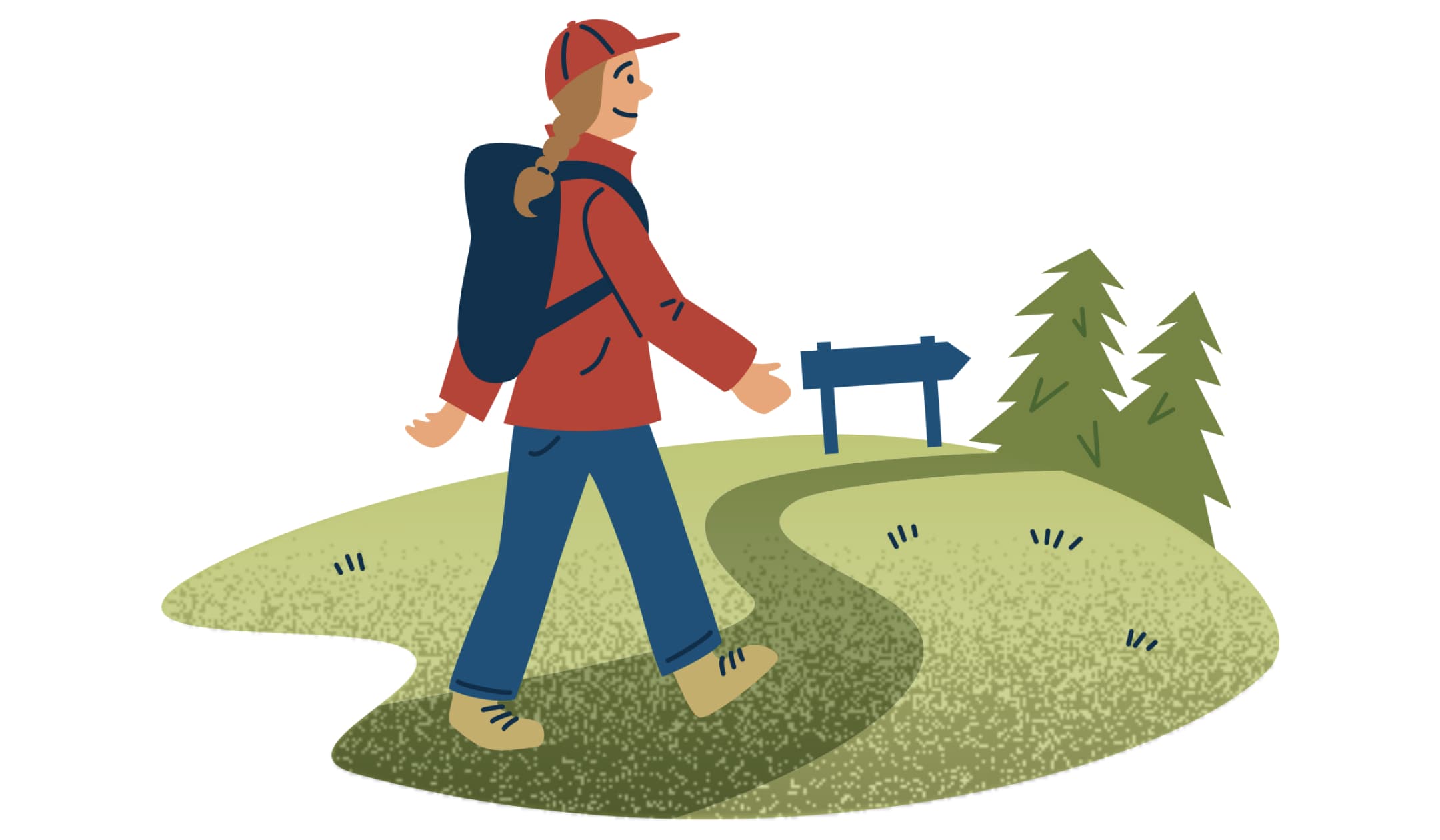
Use signposted trails to avoid wear and tear on the terrain
Take care of the nature and your own safety by keeping on marked paths.
Check areas and periods subject to access restrictions
Many hiking areas have access restrictions, for example during the nesting season of birds. Check the Instructions and rules page of your destination for restriction applicable to the destination and the route.
Only bike on routes where it is permitted
Biking is not allowed on all routes. Trails suitable for biking are listed separately on the destination’s Activities page.
Give space to others on shared use trails
Different modes of transport meet on shared use trails. Bicyclists should always give way to walkers. Be cautious and follow the route’s recommended direction of travel to avoid collisions. Please do not stop in the middle of the path or behind anything that obstructs you.
3. Only pitch your tent on sites where camping is allowed
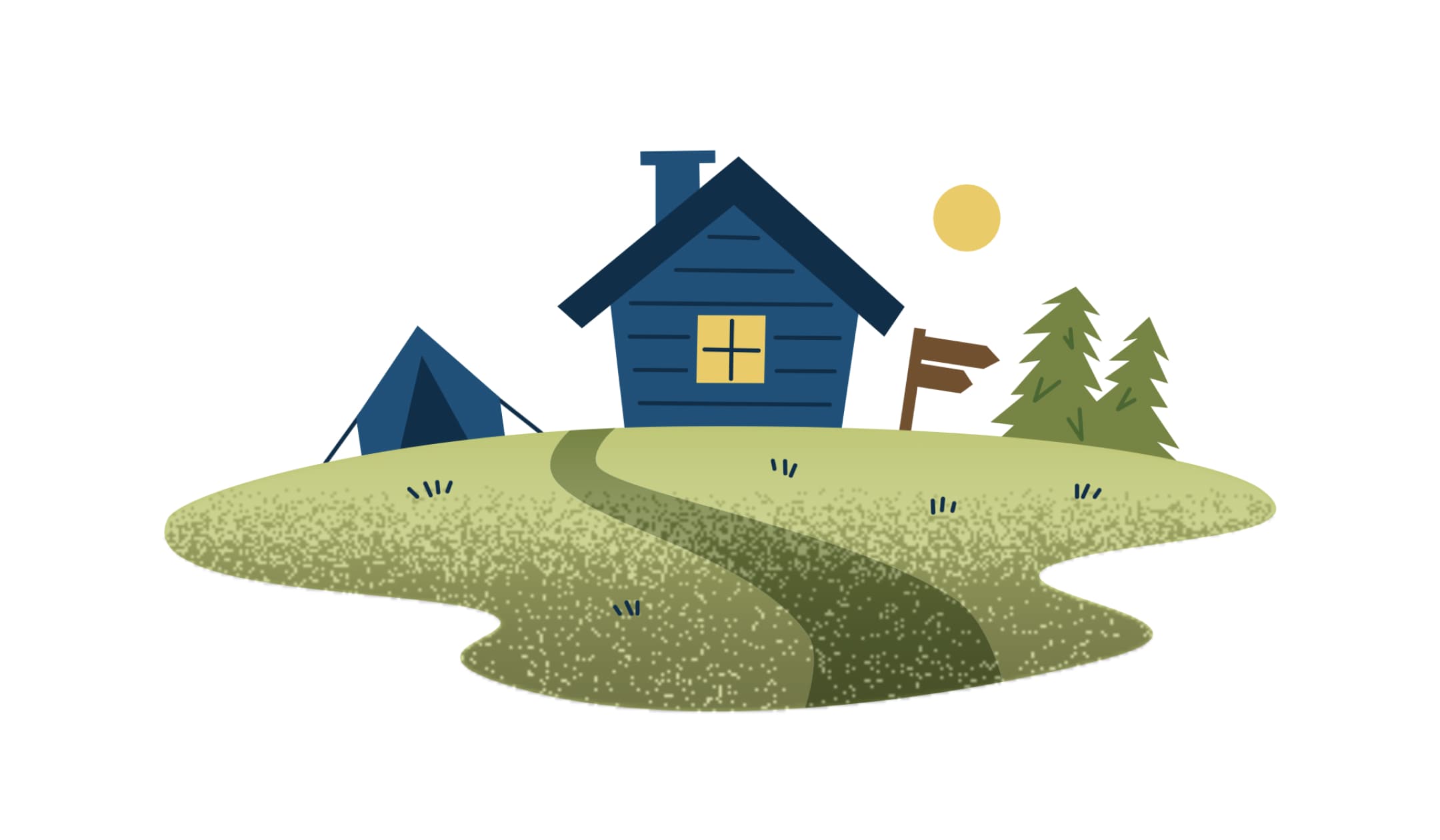
Check in advance where camping is allowed
In nature reserves, including national parks, camping is usually only permitted in designated camping areas. Check the destination’s Instructions and rules page to see where camping is permitted.
Be considerate towards other hikers and those staying in the hut overnight
They may be tired after their day’s hike and wish to enjoy the peace and quiet of nature.
Do not wash dishes or yourself in natural waters or on well covers
After use, soak any washing water into the ground far enough from natural waters or water supply points. The water at a busy rest stop can easily become contaminated by coliform bacteria if dirty water is allowed to run directly into a water body or a well.
If you intend to use huts, check the applicable instructions and practices
Hikers may use both free and paid huts for resting and staying overnight. The rules for use vary.
4. Only make fires where it is permitted
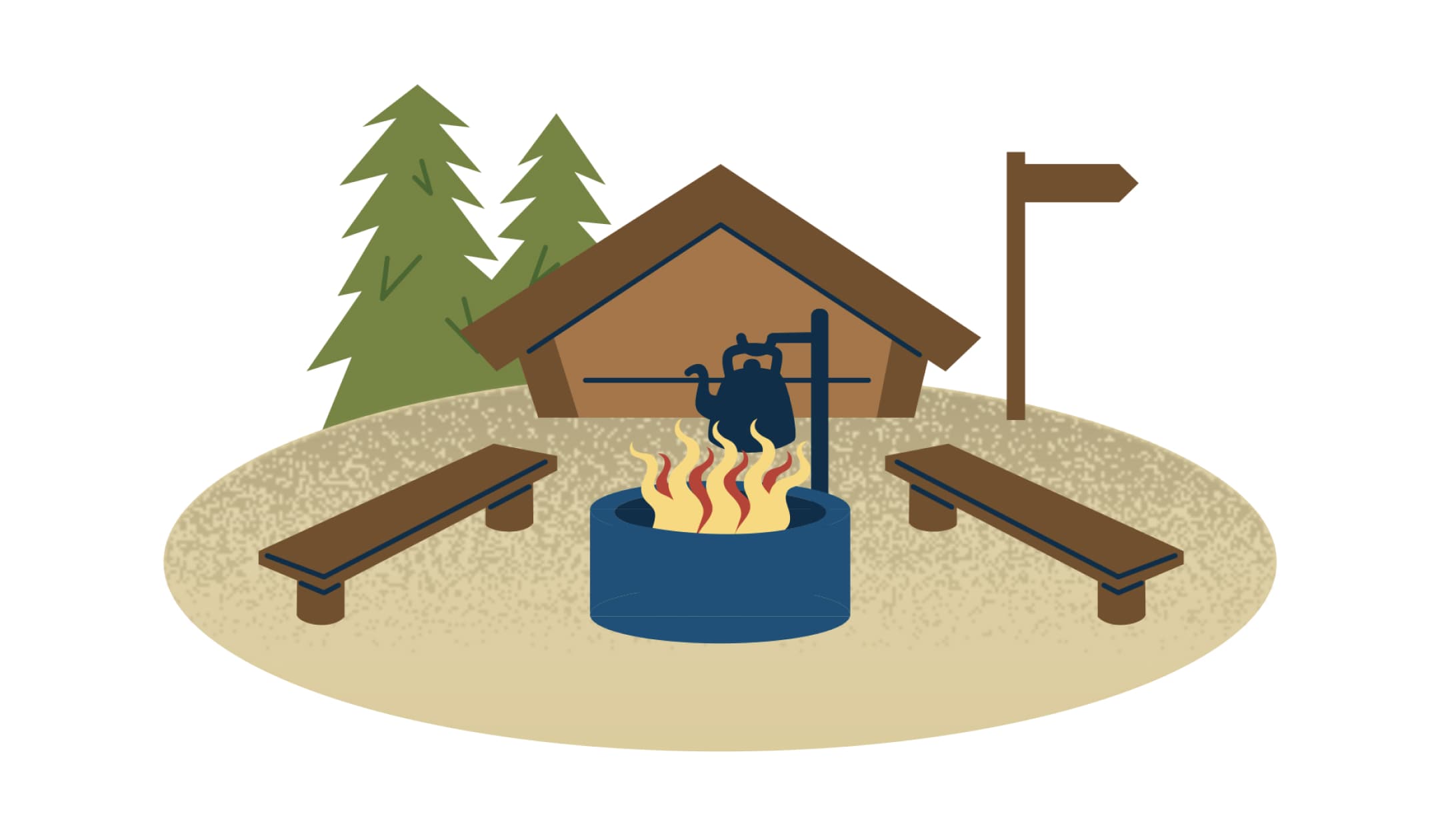
Use only marked and maintained campfire sites
Making a fire is not an everyone’s right. Lighting fires is generally only allowed at maintained and marked campfire sites.
Always check if a wildfire warning has been issued in the area
If a wildfire warning has been issued, lighting campfires is also prohibited on most marked and maintained campfire sites. Please check the Finnish Meteorological Institute’s website for any wildfire warnings.
Take other visitors into account at campfire sites
Campfire sites and campsites are in common use. Make room for other hikers. Give others the chance to relax and enjoy the peace and quiet of nature.
Camping stoves should be used as the first preference for cooking
The use of camping stoves is permissible even when a wildfire warning has been issued. Please note that hobo stoves may not be used when a wildfire warning has been issued as sparks flying from them cause a fire risk. The use of disposable grills is not recommended.
Use the firewood at the campfire site sparingly
If there are firewood at the campfire site, please use a reasonable amount. Remember that you may have to chop up the wood yourself. Bring your own fire making equipment (matches, kindlings and a knife). Do not pull bark off living trees.
The last person to leave the campfire site is always responsible for putting out the fire
It is important to ensure that the campfire has been fully extinguished, as the fire may re-ignite from embers in the ashes. Let the campfire slowly die down until there are only embers left. When the embers are no longer glowing red, pour water, snow or sand into the campfire carefully.
5. Do not litter
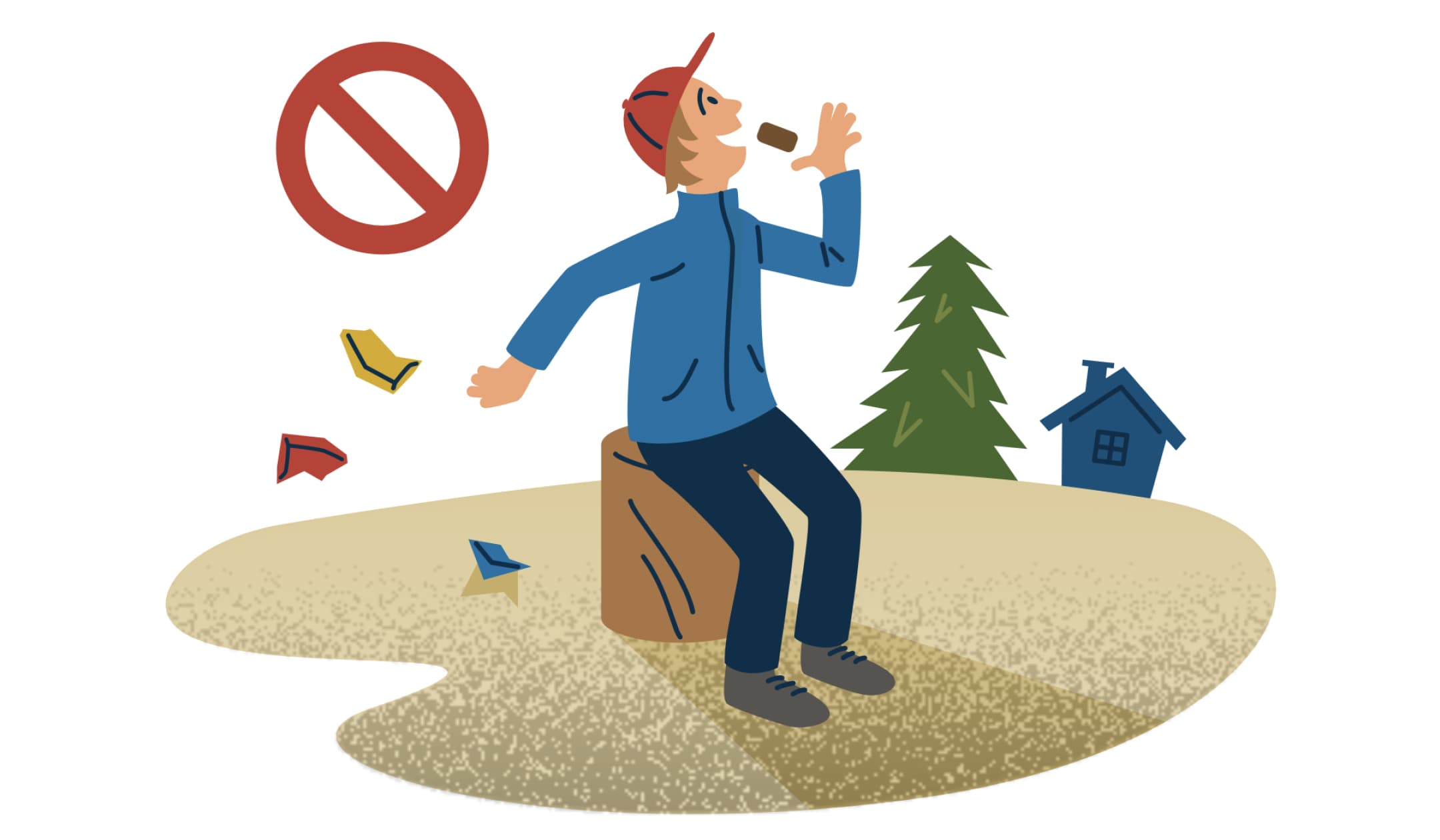
Take your rubbish away with you
Remember to bring a rubbish bag with you. Not all destinations have waste bins or recycling points. You can do a favour to nature by picking up rubbish left by others. Pack your food in reusable containers to avoid generating litter. Check out the tips on how to pack food for a hike ›
Compost correctly
You cannot throw food waste out in the forest or into some toilets. You can tip small amounts of leftover food into the dry toilet. Check the instructions for using the toilet provided at the campsite.
Do not burn your litter
Small amounts of clean paper and cardboard can be burned in a campfire or a fireplace in an open wilderness hut. Please do not burn packaging containing plastic, aluminium or other metals.
